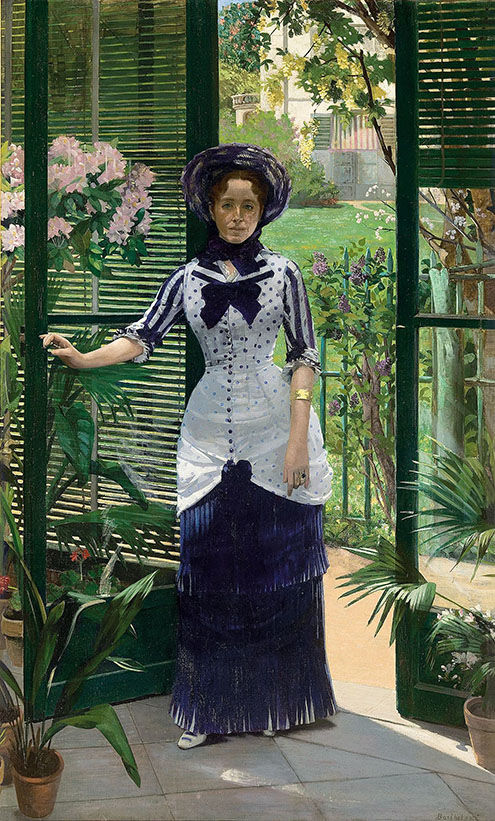James Tissot, Frederick Gustavus Burnaby, 1870
Exhibition catalog, The Art Institute of Chicago, The Metropolitan Museum of Art, Musee D'Orsay
Lael and I travelled to NYC to see this exceptionally elegant and scholarly exhibition at the Metropolitan Museum. This is one of the most exciting shows I've seen on the nineteenth century. I long ago wrote off Impressionism as trivial and over-exposed, but my, oh my, how wrong I was! Impressionism, Fashion, & Modernity explores the important role fashion played in the works of key Impressionist such as Manet, Degas and Morisot, and the curators argue that fashion embodied the transience, democratization, and ambiguity that lay at the heart of Haussmann's Paris. Specifically, between 1863 and 1869 the Parisienne emerged in the fine arts and literature as a cultural symbol of the sophisticated fashionable women found in the theaters and drawing rooms of artistic circles.
I've fallen in love with with precise grace of Tissot's paintings. Before this exhibition, I thought he was too much of an illustrator to be worth much attention, but the beautiful paintings I saw at the Met taught me otherwise. It was treat to see so many treasures from the Orsay such as Manet's Reading and Monet's Women in the Garden. I've never visited the Art Insititute of Chicago so I was thrilled to view Seurat's A Sunday on La Grande Jatte and Caillebotte's Paris Street; Rainy Day.
Its funny how the commodification of art impacts the experiential quality of looking at a painting; that is, in the late 1980s I owned an umbrella printed with Paris Street; Rainy Day. Viewing Caillebotte's painting for the first time felt, unaccountability, like seeing an old friend after a long absence. I didn't feel any frisson of excitement from viewing the physical artifact. I was just struck by how delicious the realism is in the painting. I thought, "Yup, here's the Mother of my umbrella."
What made this show so special is that costumes are set in front of portrait paintings that show the identical or very similar fashion. The clothing appears to have popped out of the painting and landed on the museum floor in a vitrine. Below is a portrait of Madame Bartholome by her husband Albert Bartholome and, miraculously, the exact summer dress she wore while posing for the portrait. The fashion recontextualized familiar paintings by prompting me to look more carefully at what I thought I already knew and the physical reality of the costumes gave me a greater appreciation for the works I had dismissed earlier.

|
No comments:
Post a Comment